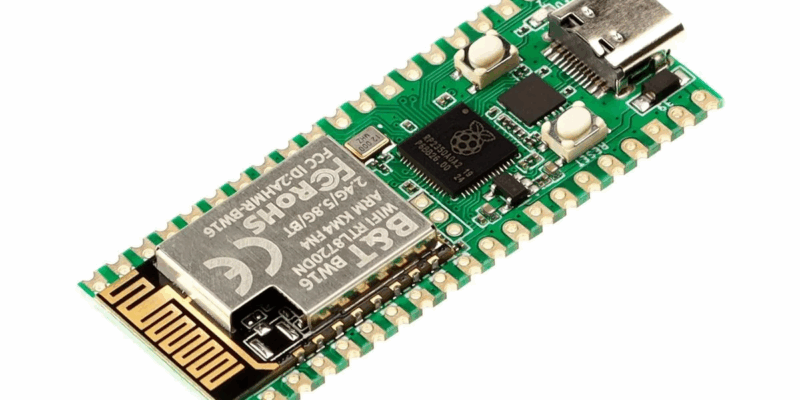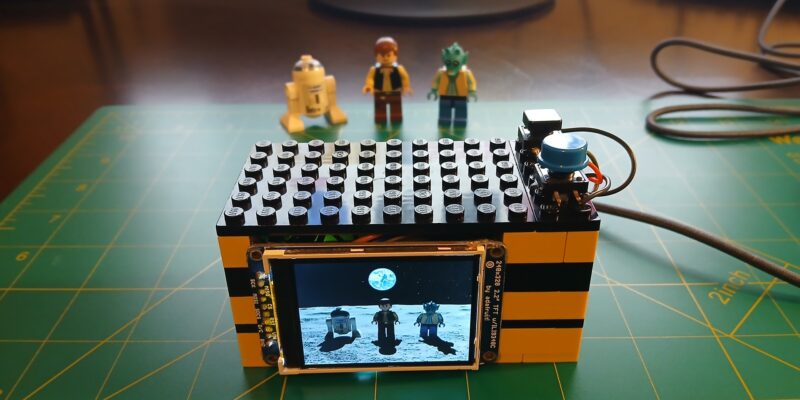Ooznest WorkBee CNC Machine Kit review
By Daniel Hollands. Posted
This article was originally published as part of HackSpace magazine, which has since been incorporated into Raspberry Pi Official Magazine.

One of the core aspects of software development, especially for tasks which are repeated on a regular basis, is automation, i.e. scripts or tools that complete tasks for you. This reduces human error, gives you more speed and efficiency, and frees up time to do other work.
We mention this because this reviewer is a software engineer by day, and a hobbyist woodworker by night. A CNC router is something which perfectly bridges these two very different worlds by allowing automation to enter the realms of woodworking, providing many of the same benefits.
The CNC we’re talking about today is the WorkBee by Ryan Lock, an open-source design which builds on the prior OX CNC Machine design by Mark Carew. It is sold as a kit by Lock’s company, Ooznest, comes in six sizes ranging from 500×500 mm to 1500×1500 mm, and features options on connectivity (WiFi or Ethernet), choice of router (Katsu, Makita, and DeWalt), and design software (Cut2D, VCarve, and Aspire, all by Vectric), along with some optional extras. The machine reviewed is the 1000×1000 mm WiFi, with the VCarve Pro software, DeWalt router, and all the optional extras, which cost £2575.
Advertisement
Christmas is coming – keep Santa on the right track with our Raspberry Pi gift guide!
When the kit arrived, we were filled with a mix of joy and anxiety. Joy at all the exciting things we could make, and anxiety at the sheer quantity of parts we had to assemble.
It turns out we needn’t have worried, as while the parts are numerous, the online documentation system is excellent, featuring step by step guidance and good quality images which help enhance your understanding of the instructions. We did notice one or two small errors and omissions, but these are quick to be identified via the built-in comment system, populated with help and suggestions by other customers.
The build, which requires a small selection of Allen keys, a couple of spanners, and a screwdriver (none of which are supplied) took this reviewer eight evenings over a period of about two weeks, although it probably could be done in a single weekend, had the time been available.
The build was uneventful, barring three minor exceptions. The first was this reviewer’s own fault for not following the instructions correctly, and was easy to resolve once he’d figured that out. The second was the trouble he had attaching the spoilerboard to the frame, which is a quirk of the design, but thankfully doesn’t need to happen that often. And the third was an issue with the Z-axis failing to home correctly, about which we contacted Ooznest. They were quick to diagnose an issue with the limit-switch and posted a replacement part to us before the day was out. In fact, now would be a good time to mention just how good Ooznest customer service is as, on every occasion we spoke with them, they’ve been very helpful, often bending over backwards to assist.

With the machine fully constructed, we set about running the first job, that of ensuring the spoilerboard was parallel by surfacing it. This was the first time we had set a job on the machine, so were happy to find that Ooznest had a video on their YouTube channel (one of many other such videos) explaining exactly what to do, which made it far less intimidating.
The machine is controlled by an intuitive browser-based interface, into which you upload the G-code generated by your CAD/CAM software, which in our case was VCarve. Although this isn’t a review of VCarve, we will take a moment to mention that, while the interface looks a bit intimidating at first glance, we found it quick and easy to learn the functionality we needed, even if we are barely scratching the surface of what the software is capable of. We’re just disappointed it’s not available for macOS.
Having used the machine for a couple of months now, we can tell it’s a solid piece of kit and very much beloved by the legion of WorkBee owners we’ve connected with since buying it. Dust collection is an absolute must, so you’ll need to invest in a Shop-Vac if you don’t already have one and, for this reason, we recommend including the dust shoe in your configuration. We were disappointed that the end mill starter kit didn’t come with any v-bits, but otherwise, the selection provided let us hit the ground running.
We’ll finish the review by mentioning there are a fringe of woodworkers who turn their noses up at CNC machines, claiming it’s not real woodworking if the machine is doing all the work. Obviously, we disagree with this stance, and retort that a CNC is just another tool that adds to the arsenal of what can be done, not a magic box which does it all for you. This reviewer is very happy to have the WorkBee as part of his workshop and he’s looking forward to putting it to work in many future projects.
Price: from £1245.00
ooznest.co.uk
VERDICT
An excellent piece of kit for any hobbyist woodworker.
9/10
Daniel Hollands is a full stack software engineer and web developer slowly learning how to become a maker
Subscribe to Raspberry Pi Official Magazine
Save up to 37% off the cover price and get a FREE Raspberry Pi Pico 2 W with a subscription to Raspberry Pi Official Magazine.
More articles
Sign up to the newsletter
Get every issue delivered directly to your inbox and keep up to date with the latest news, offers, events, and more.


